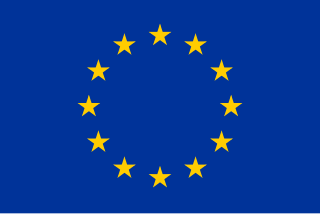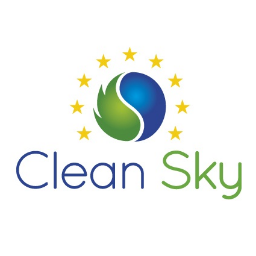
École Centrale de Nantes, or Centrale Nantes, is a grande école - a French engineering school - established in 1919 under the name of Institut Polytechnique de l'Ouest. It delivers Graduate, Master, and PhD Programmes based on the latest scientific and technological developments and the best management practices.

Eureka is an intergovernmental organisation for research and development funding and coordination. Eureka is an open platform for international cooperation in innovation. Organisations and companies applying through Eureka programmes can access funding and support from national and regional ministries or agencies for their international R&D projects.

The Energy Research Centre of the Netherlands (ECN) is one of the largest energy research institute in Europe and holds a strong international position. With and for the market, ECN develops knowledge and technology that enable a transition to a sustainable energy system. The main office is located in Petten. ECN also has offices in Amsterdam, Eindhoven, Wieringermeer, Brussels and China. ECN has a staff of about 550 employees.

The European Research Area (ERA) is a system of scientific research programs integrating the scientific resources of the European Union (EU). Since its inception in 2000, the structure has been concentrated on European cooperation in the fields of medical, environmental, industrial, and socioeconomic research. The ERA can be likened to a research and innovation equivalent of the European "common market" for goods and services. Its purpose is to increase the competitiveness of European research institutions by bringing them together and encouraging a more inclusive way of work, similar to what already exists among institutions in North America and Japan. Increased mobility of knowledge workers and deepened multilateral cooperation among research institutions among the member states of the European Union are central goals of the ERA.

The Framework Programmes for Research and Technological Development, also called Framework Programmes or abbreviated FP1 to FP9, are funding programmes created by the European Union/European Commission to support and foster research in the European Research Area (ERA). Starting in 2014, the funding programmes were named Horizon.

Renewable energy plays an important and growing role in the energy system of the European Union. The Europe 2020 strategy included a target of reaching 20% of gross final energy consumption from renewable sources by 2020, and at least 32% by 2030. The EU27 reached 22% in 2020, up from 9.6% in 2004. These figures are based on energy use in all its forms across all three main sectors, the heating and cooling sector, the electricity sector, and the transport sector.

The Centre for Renewable Energy Systems Technology (CREST) is a research centre into renewable energy based in the Department of Mechanical, Electrical and Manufacturing Engineering, Loughborough University in England.

Although the European Union has legislated, set targets, and negotiated internationally in the area of energy policy for many years, and evolved out of the European Coal and Steel Community, the concept of introducing a mandatory common European Union energy policy was only approved at the meeting of the European Council on October 27, 2005 in London. Following this the first policy proposals, Energy for a Changing World, were published by the European Commission, on January 10, 2007. The most well known energy policy objectives in the EU are 20/20/20 objectives, binding for all EU Member States. The EU is planning to increase the share of renewable energy in its final energy use to 20%, reduce greenhouse gases by 20% and increase energy efficiency by 20%.
The European Road Transport Research Advisory Council (ERTRAC) is a European organisation on road transport, which brings together several road transport stakeholders, such as consumers, vehicle manufacturers, component suppliers, road infrastructure operators and developers, service providers, energy suppliers, research organisations, cities and regions as well as public authorities at both European Union and national level.
The Energy Performance of Buildings Directive (EPBD) is the European Union's main legislative instrument aiming to promote the improvement of the energy performance of buildings within the European Union. It was inspired by the Kyoto Protocol which commits the EU and all its parties by setting binding emission reduction targets.

The Innovative Medicines Initiative (IMI) is a European initiative to improve the competitive situation of the European Union in the field of pharmaceutical research. The IMI is a joint initiative of the DG Research of the European Commission, representing the European Communities, and the European Federation of Pharmaceutical Industries and Associations (EFPIA). IMI is laid out as a Joint Technology Initiative within the Seventh Framework Programme. Michel Goldman was the first executive director, from September 2009 until December 2014.
The European Biofuels Technology Platform (BiofuelsTP) is a European Seventh Framework Programme initiative to improve the competitive situation of the European Union in the field of biofuel.
The European Construction Technology Platform (ETCP) is a European Seventh Framework Programme initiative to improve the competitive situation of the European Union in the field of construction.
The European Rail Research Advisory Council (ERRAC) is a European Seventh Framework Programme initiative to improve the competitive situation of the European Union to revitalise the European rail sector.
The European Space Technology Platform (ESTP) is a European Seventh Framework Programme initiative to improve the competitive situation of the European Union in the field of space technology. It continues to work during Horizon 2020 (2014–2020).
The European Steel Technology Platform (ESTEP) is a European Seventh Framework Programme initiative to improve the competitive situation of the European Union in the field of steel technology. The main objective of the programme is to produce a Strategic Research Agenda (SRA).
The European Technology Platform for Sustainable Chemistry (SusChem) is a European Technology Platform (ETP) initiative to improve the competitive situation of the European Union in the field of chemistry in three domains: Industrial Biotechnology, Materials Technology, and Reaction and Process Design.
The North Sea Offshore Grid, officially the North Seas Countries Offshore Grid Initiative (NSCOGI), was a collaboration between EU member-states and Norway to create an integrated offshore energy grid which links wind farms and other renewable energy sources across the northern seas of Europe. It is one of several proposed European super grid schemes. Since 2016, the cooperation has been integrated into the new Political Declaration on energy cooperation between the North Seas Countries.

The Clean Sky Joint Undertaking (CSJU) is a public-private partnership between the European Commission and the European aeronautics industry that coordinates and funds research activities to deliver significantly quieter and more environmentally friendly aircraft. The CSJU manages the Clean Sky Programme (CS) and the Clean Sky 2 Programme (CS2), making it Europe's foremost aeronautical research body.
The European Union's scientific collaboration beyond the bloc describes the European Union's frameworks for bilateral cooperation and specific projects in science and technology with countries and regional blocs situated beyond the European Union.








